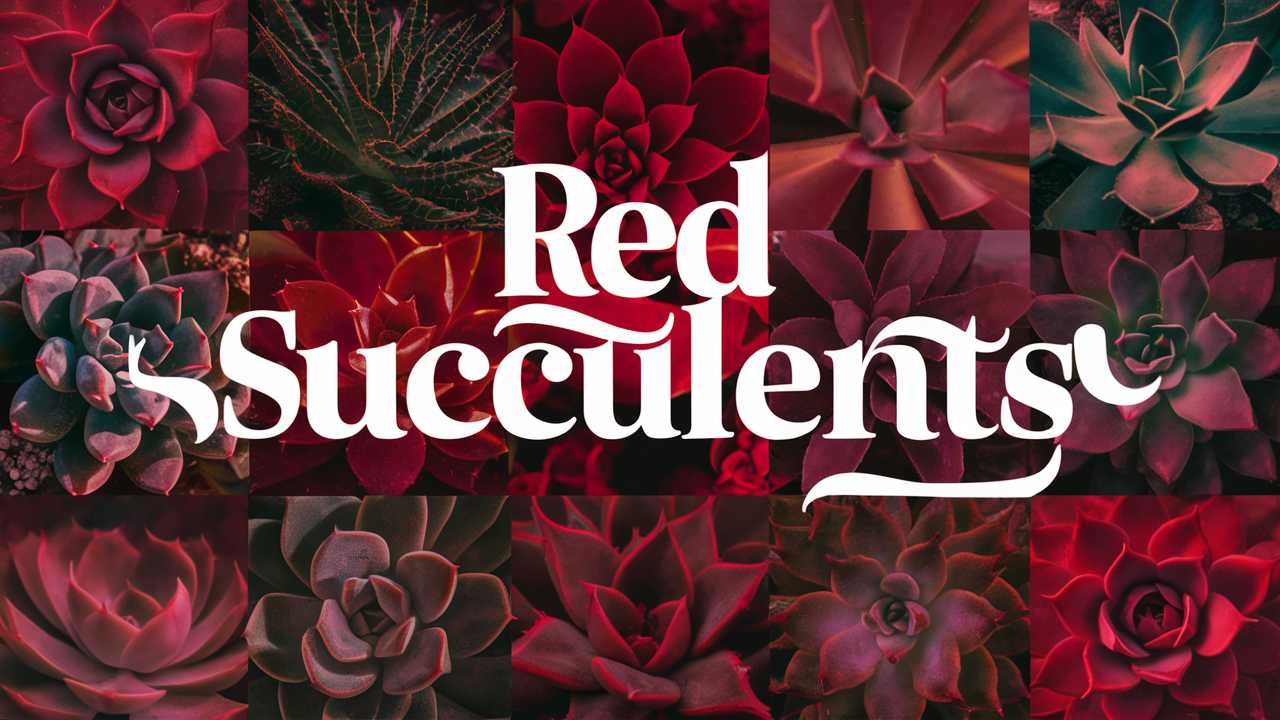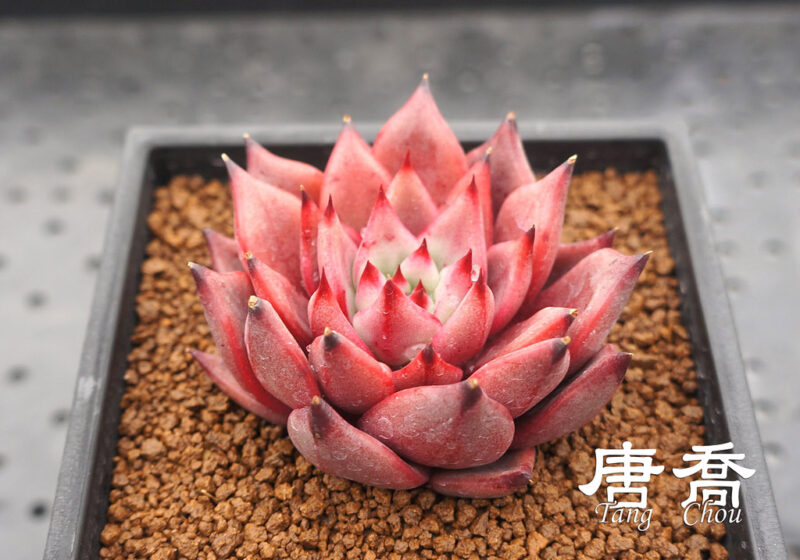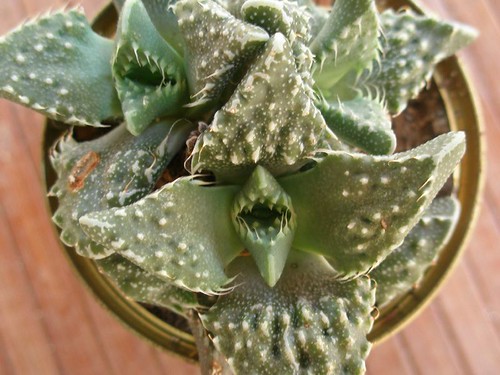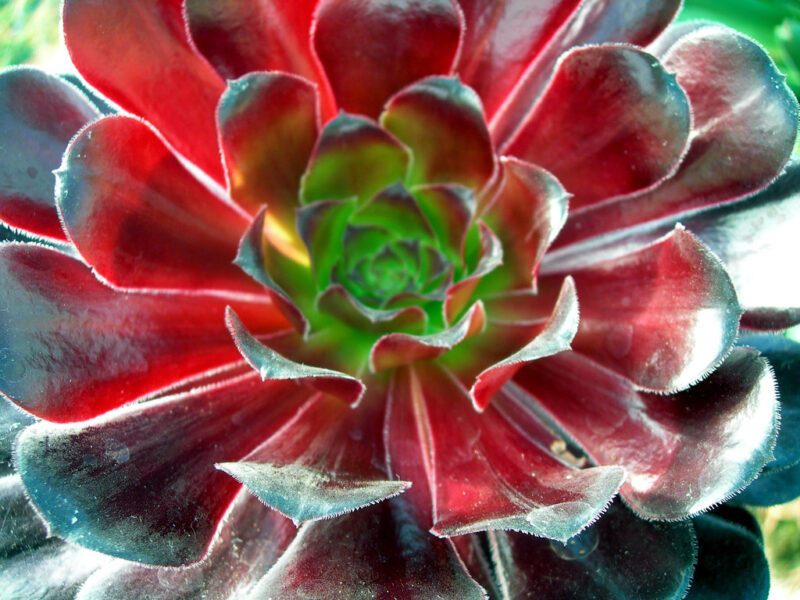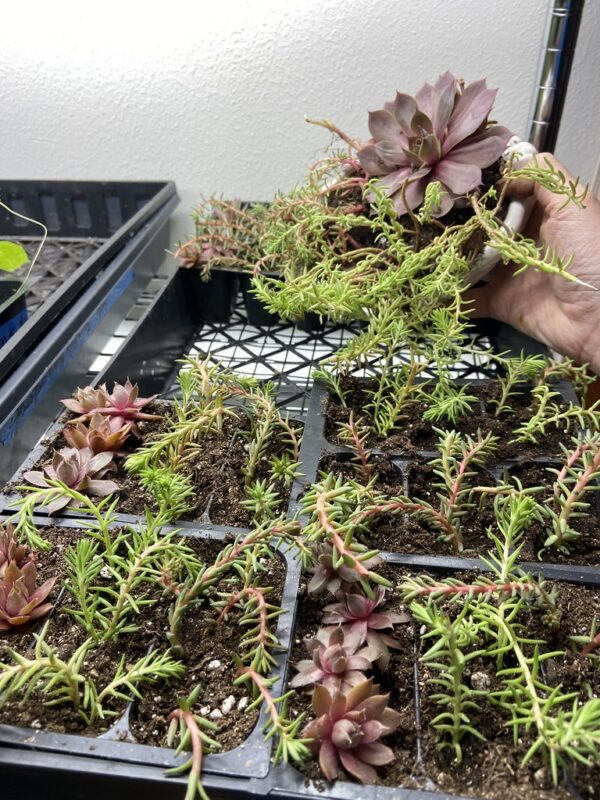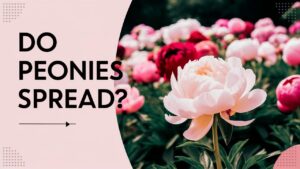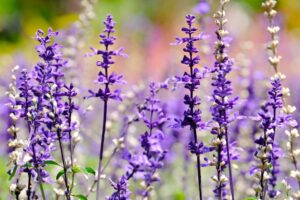Red succulents add an exceptional splash of color to any collection, garden, or indoor space. They come in diverse shapes and sizes, each with unique characteristics that make them incredible additions to any plant lover’s collection.
Sempervivum Heuffelii ‘Chocolate Sundae’
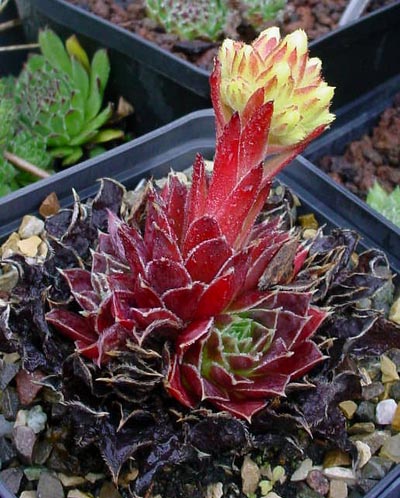
The Sempervivum Heuffelii ‘Chocolate Sundae’ is a stunning cultivar that captivates with its rich, chocolate-brown leaves accented by deep red tips. This hardy succulent thrives in rocky, well-drained soils and is ideal for those looking to add an eye-catching element to their rock gardens or containers.
Care Tips: ‘Chocolate Sundae’ is drought-tolerant, making it suitable for xeriscaping. It prefers bright, indirect sunlight and can even handle some direct sun during cooler periods. Water sparingly; a good rule of thumb is to let the soil dry out completely between waterings.
Fun Fact: The name ‘Sempervivum’ means “live forever” in Latin, encapsulating the resilience of this charming plant.
Echeveria agavoides ‘Romeo’
Echeveria agavoides ‘Romeo’ is a favorite among succulent enthusiasts for its striking red margins and adorable rosette shape. The leaves are thick and fleshy, capable of storing water, enhancing its drought resistance.
Care Tips: This succulent loves bright light, which enhances the red coloration, especially if placed in direct sunlight for a few hours each day. Water it only when the soil is completely dry to avoid root rot.
Unique Feature: This variety is often hailed for its exquisite symmetry and attractive form, making it an excellent choice for both beginners and seasoned gardeners.
Crassula capitella ‘Red Pagoda’
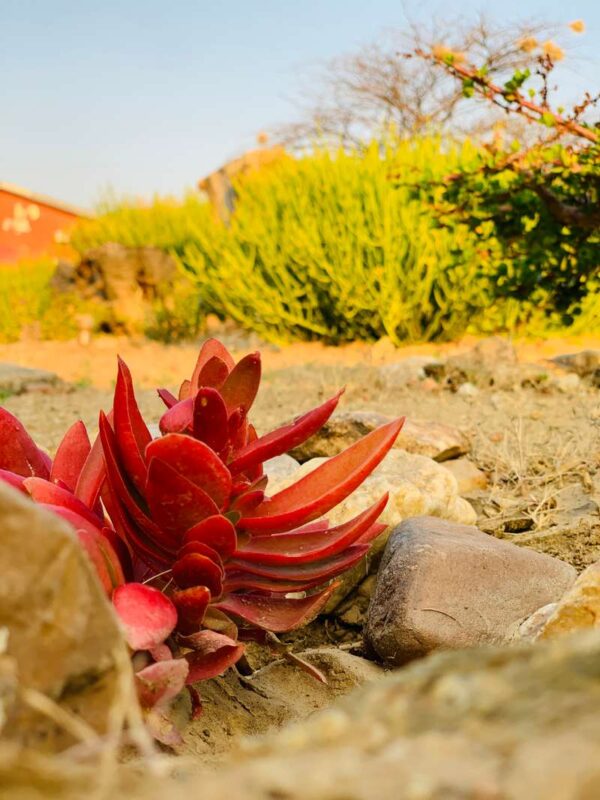
One of the most visually interesting succulents is Crassula capitella ‘Red Pagoda’, known for its unique pyramid-like shape and vibrant red hues. The leaves stack neatly on top of each other, resembling a pagoda, which is how it gets its lively name.
Care Tips: Like many succulents, ‘Red Pagoda’ thrives in bright light. Water when the soil completely dries out, and be cautious of overwatering as it can lead to root issues.
Personality Trait: This plant can bring a sense of whimsy to your garden, evoking images of distant lands and serene pagodas due to its unique shape.
Sempervivum ‘Red Lion’

Majestic and bold, Sempervivum ‘Red Lion’ offers a stunning display of deep crimson and maroon colors. Its robust form and serrated leaf edges make it a showstopper in any succulent arrangement.
Care Tips: This succulent prefers sandy soil and needs full sun to thrive. It is also quite hardy, being able to withstand colder temperatures, making it a versatile choice for outdoor gardens.
Great To Know: It produces offsets, or “pups,” which can be harvested and propagated, making it an economical choice for those looking to expand their collection over time.
Sedum rubrotinctum ‘Aurora’
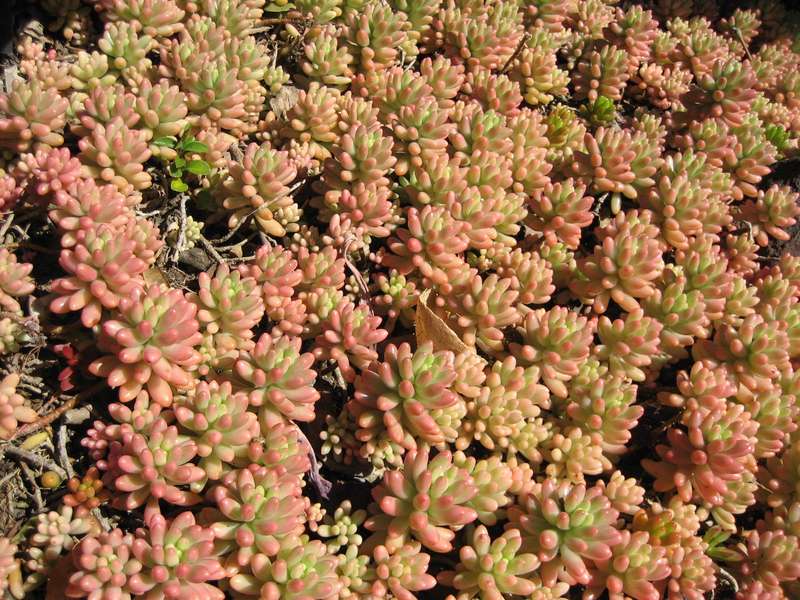
Known colloquially as the ‘Jelly Bean’ plant, Sedum rubrotinctum ‘Aurora’ showcases beautiful, plump leaves that transition from a soft green to a warm, reddish hue with plenty of sunlight.
Care Tips: This succulent is a low-maintenance option that grows best in well-draining soil and bright, indirect sunlight. It’s drought-tolerant and makes a perfect addition to succulent arrangements.
Interesting Fact: The leaves are edible, adding a unique curiosity to this widely popular succulent which many gardeners appreciate!
Euphorbia trigona ‘Royal Red’
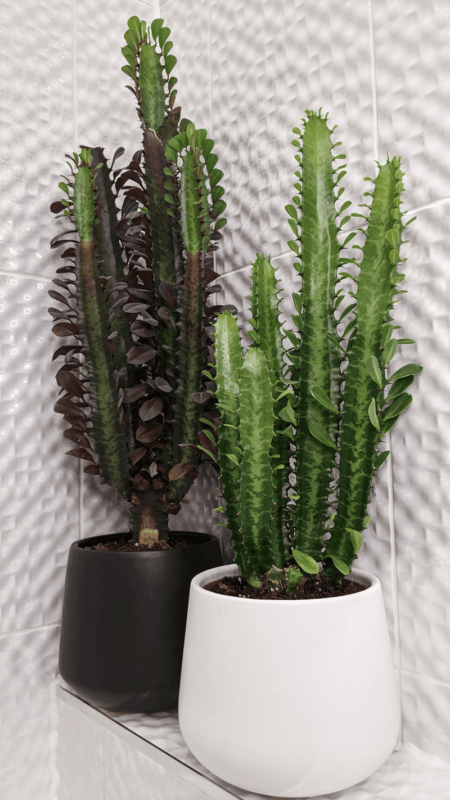
Remarkably stunning, Euphorbia trigona ‘Royal Red’ is a striking succulent that features upright stems, often adorned with a vibrant red hue, especially as it matures. Despite its cactus-like appearance, this succulent belongs to the Euphorbiaceae family.
Care Tips: This plant prefers intense sunlight to maintain its vivid colors but should be protected from extreme heat. Watering should occur when the soil is dry, and like its relatives in the Euphorbia family, it is crucial to be cautious due to its milky sap, which can be irritating.
Visual Appeal: Its sculptural form and vibrant coloring make it a fabulous choice for modern and minimalist decor styles.
Mammillaria spinosissima ‘Red-Headed Irishman’
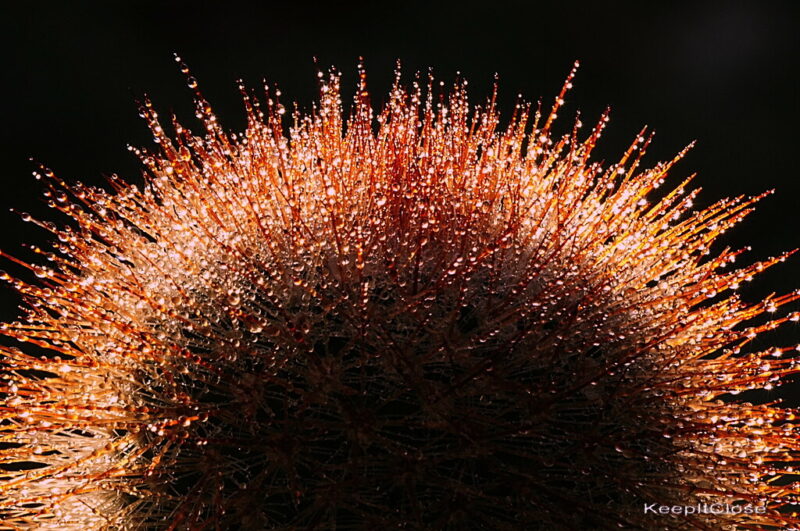
A delightful addition to any succulent lover’s collection, the Mammillaria spinosissima ‘Red-Headed Irishman’ features small, spiky clusters adorned with bright red tufts, resembling a quirky hairstyle.
Care Tips: This plant enjoys bright light but can tolerate some shade, making it versatile for indoor or outdoor displays. It is essential to let the soil dry out between waterings to prevent any form of rot.
Charming Aspect: Its cute, spiky appearance brings a playful touch to your collection and sparks conversation among guests.
Tillandsia ionantha ‘Air Plant’
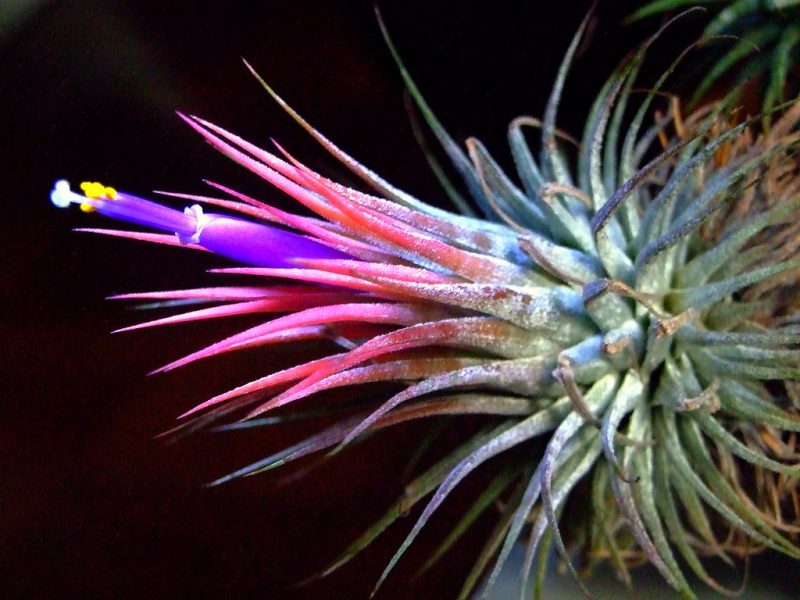
While technically not a succulent, the Tillandsia ionantha, better known as the air plant, deserves mention for its stunning red inflorescence. These plants derive moisture and nutrients through their leaves, making them unique and easy to care for.
Care Tips: Air plants thrive in bright, indirect light and require regular misting or soaking in water every 1-2 weeks to meet their moisture needs.
Whimsical Detail: The vibrant blooms of ‘Ionantha’ can transform your space, adding a touch of color and intrigue that transcends traditional potted plants.
Crassula Capitella Red Campfire
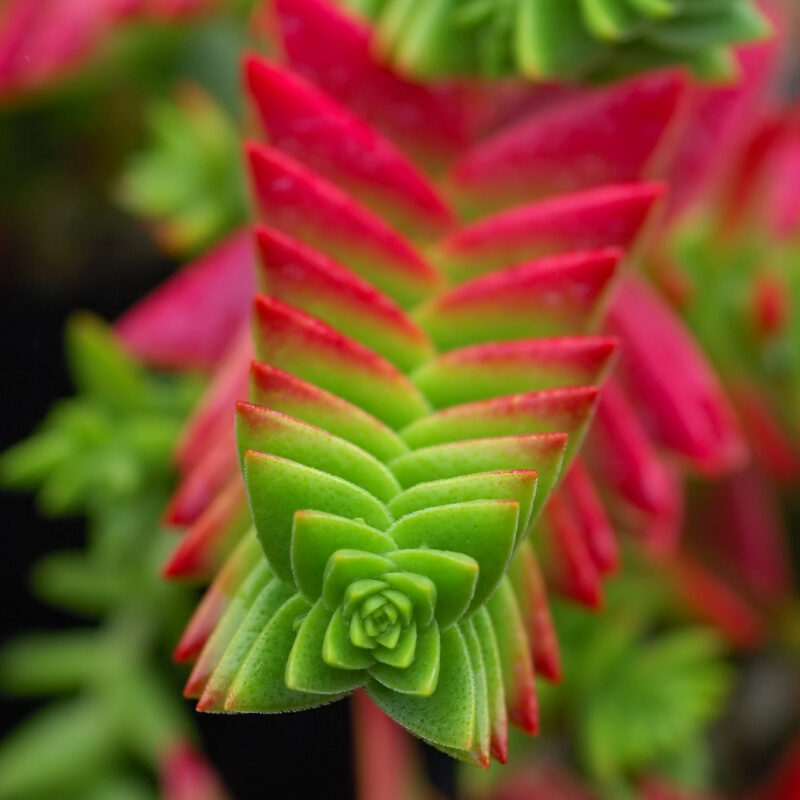
Another gem in the Crassula family is Crassula capitella ‘Red Campfire’. This succulent’s flame-like appearance and bright red coloration exude warmth and vibrancy.
Care Tips: It thrives in bright sunlight, which enhances its reddish tones. Water only when the soil is dry, keeping in mind that it is sensitive to overwatering.
Creative Use: Use ‘Red Campfire’ in colorful arrangements or as a focal piece in succulent gardens to amplify its aesthetic allure.
Sedum album – Red Ice
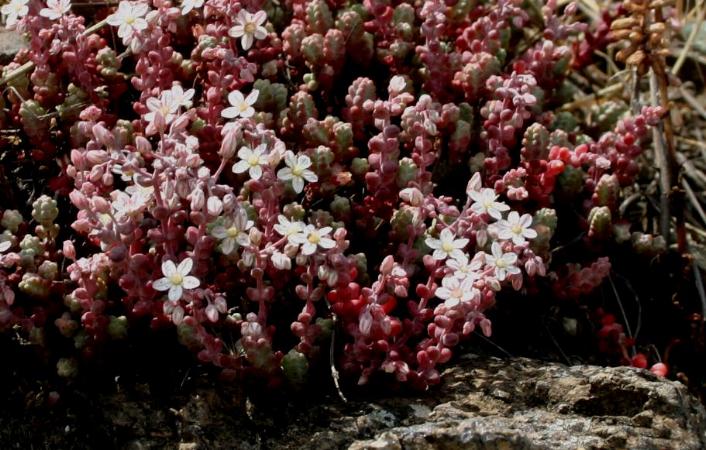
Dubbed Sedum album ‘Red Ice’, this robust succulent boasts stunning red-tinted leaves that are fleshy and frost-resistant. Its vivid hues often intensify in cooler temperatures, which can add seasonal decor to your garden or indoor space.
Care Tips: The plant thrives in sunny locations, requiring well-draining soil. Water it thoroughly but allow it to dry out between watering sessions to prevent decay.
Cultural Reference: The name ‘ice’ symbolizes resilience against harsh conditions, making it a fitting testament to its hardy nature.
Graptosedum California Sunset
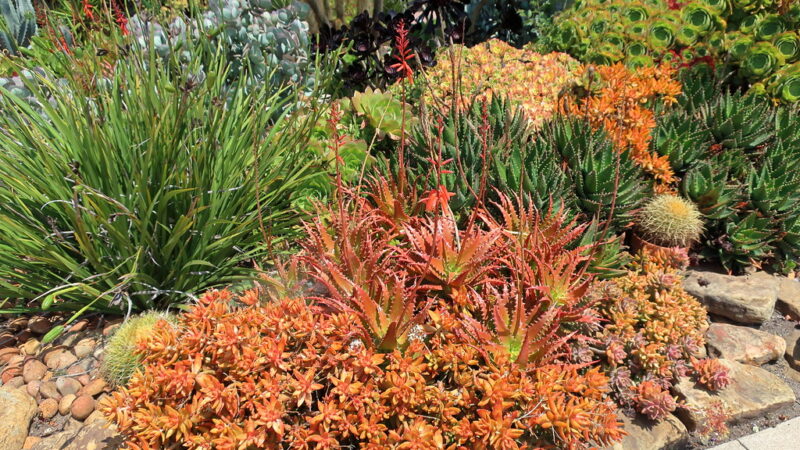
Graptosedum California Sunset is a mesmerizing hybrid of Graptopetalum and Sedum known for its breathtaking sunset hues that blend reds, oranges, and yellows. It creates a unique and colorful display in any setting.
Care Tips: Like many succulents, this beauty thrives with sufficient sunlight and well-draining soil. Watering should occur when the substrate is thoroughly dry to ensure optimal growth.
Artistic Flair: Its stunning colors are reminiscent of sunset skies, making it a wonderful centerpiece in floral arrangements or as a solo piece.
Crassula radicans platyphylla
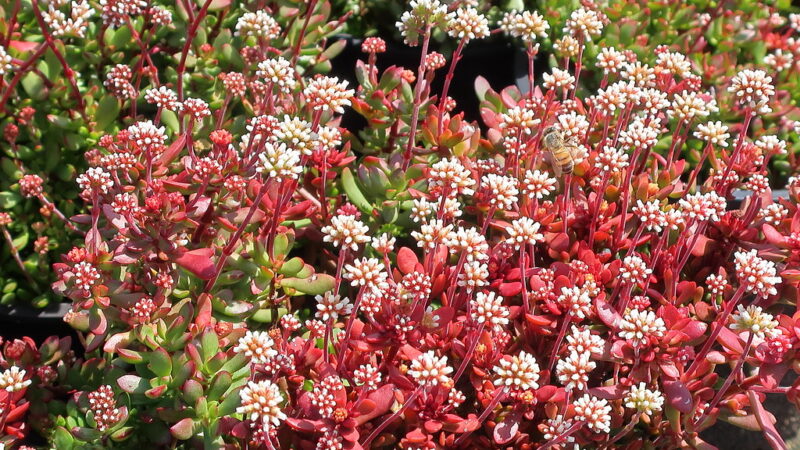
The Crassula radicans platyphylla, known for its sprawling growth and robust fleshy leaves, can take on vibrant red shades, especially when exposed to ample sunlight.
Care Tips: This succulent prefers bright light for the best color development, yet it can adapt to partial shade. Ensure it has well-draining soil and water it seven days after the last soaking.
Charming Quality: Its unique growth habit makes it perfect for hanging baskets or cascading arrangements that radiate natural beauty.
Kalanchoe sexangularis – Six-Angled Kalanchoe
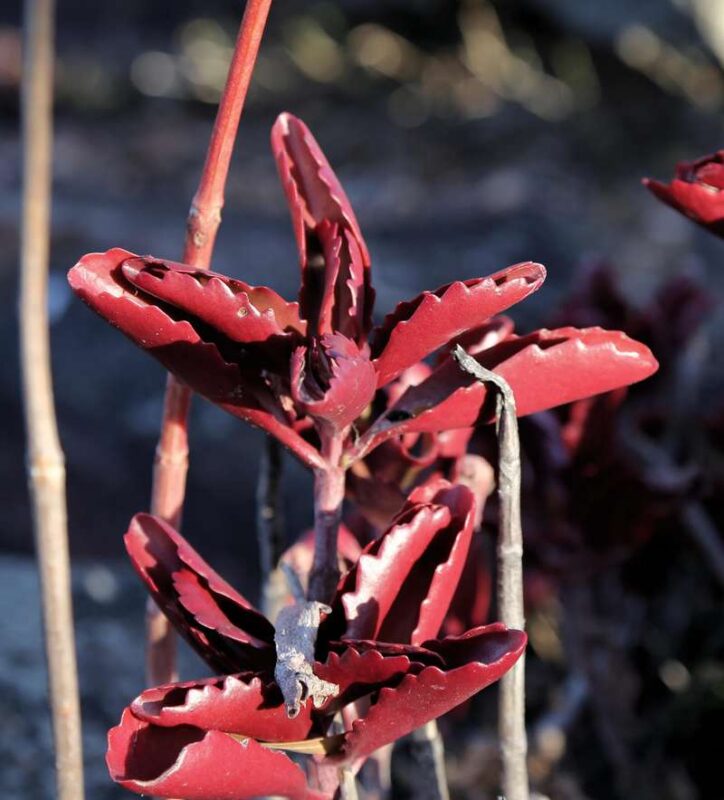
The fascinating Kalanchoe sexangularis, commonly called the Six-Angled Kalanchoe, showcases cylindrical leaves with a subtle red hue and angular edges that distinguish it from other varieties.
Care Tips: This plant thrives in bright, indirect light and prefers a soil that offers excellent drainage. Water it less frequently, adhering to the succulent rule of allowing the soil to dry out completely.
Unique Pattern: Its geometric shape enhances modern garden designs, contributing a dash of sophistication and elegance.
Graptosedum ‘Vera Higgins’ Alpen Glow
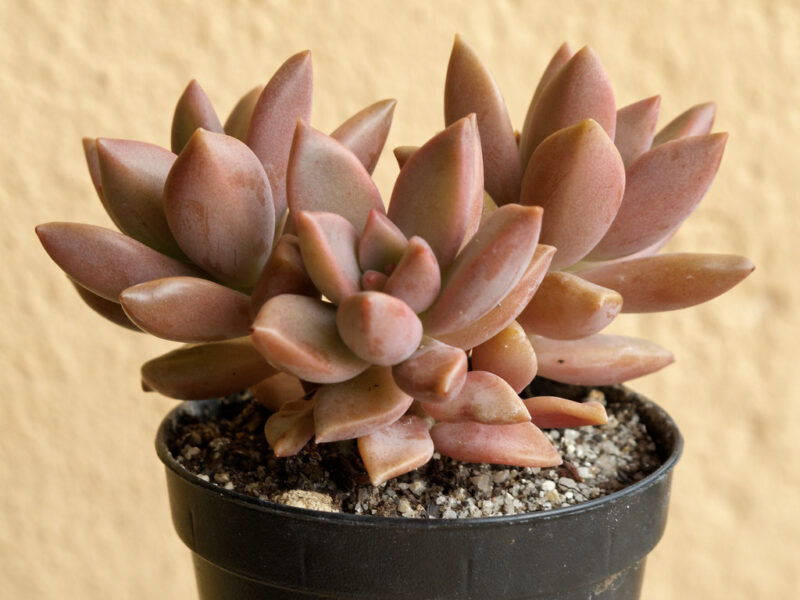
The Graptosedum ‘Vera Higgins’ Alpen Glow is a striking hybrid that offers a unique blend of colors, ranging from deep greens to rosy reds. This beauty showcases a rosette form that is both delicate and resilient.
Care Tips: It appreciates bright light, so placing it on a windowsill is advisable. Only water once the soil dries out entirely to maintain optimal health.
Symbolic Significance: The mixed hues represent transformation, making it a meaningful gift for various occasions.
Sedum Letizia – Lety’s Sedeveria
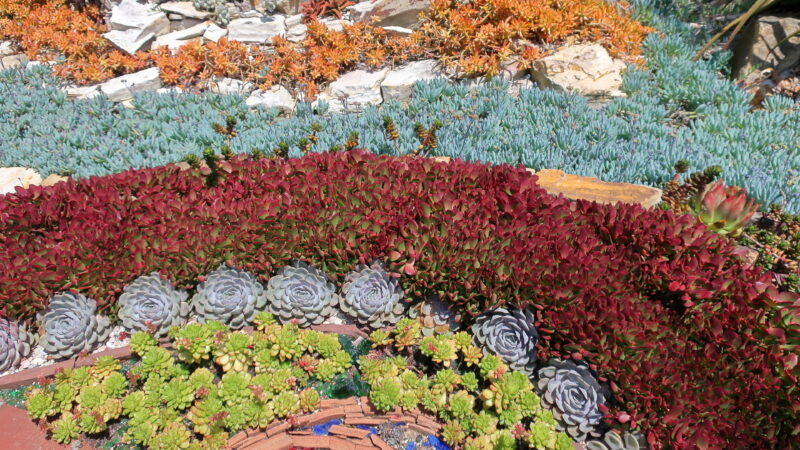
Sedum Letizia, also known as Lety’s Sedeveria, features glossy green leaves that can take on a reddish tint under the right conditions, often enhancing its attractive appearance.
Care Tips: This succulent enjoys bright-direct sunlight, making it ideal for sunny windowsills or outdoor patios. Watering should be consistent but allow the soil to dry between treatments.
Caring Gesture: It offers a generous aesthetic, wrapped comfortably in its hardy succulent nature, inviting you to enjoy and nurture its beauty.
Echeveria Suyon
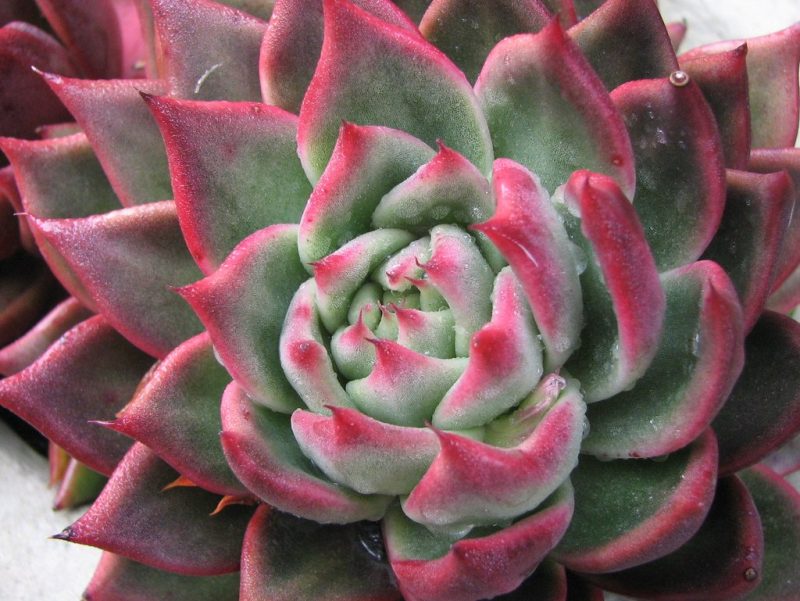
A must-see for any succulent lover is Echeveria Suyon, widely praised for its stunning blue-green leaves and flaring red edges. This rosette-shaped succulent draws attention with its fabulous color palette.
Care Tips: To maintain its exquisite appearance, place it in an area with ample sunlight and allow the soil to dry before your next watering.
Visual Impact: Its elegant form is perfect for decorative arrangements, capturing the heart of your indoor or outdoor space.
Faucaria Tigrina – Tiger’s Jaws
Known as Tiger’s Jaws, the Faucaria Tigrina features unique serrated leaf margins that can exhibit a reddish tint under optimal conditions. This low-growing succulent showcases both texture and color.
Care Tips: The plant requires bright, well-lit conditions for optimal growth and a well-draining soil mix. Water when the soil is dry to the touch to avoid overwatering issues.
Engaging Detail: Its unusual texture and captivating coloration will encourage anyone to reach out and touch it, enhancing its allure.
Adromischus marianiae v. herrei
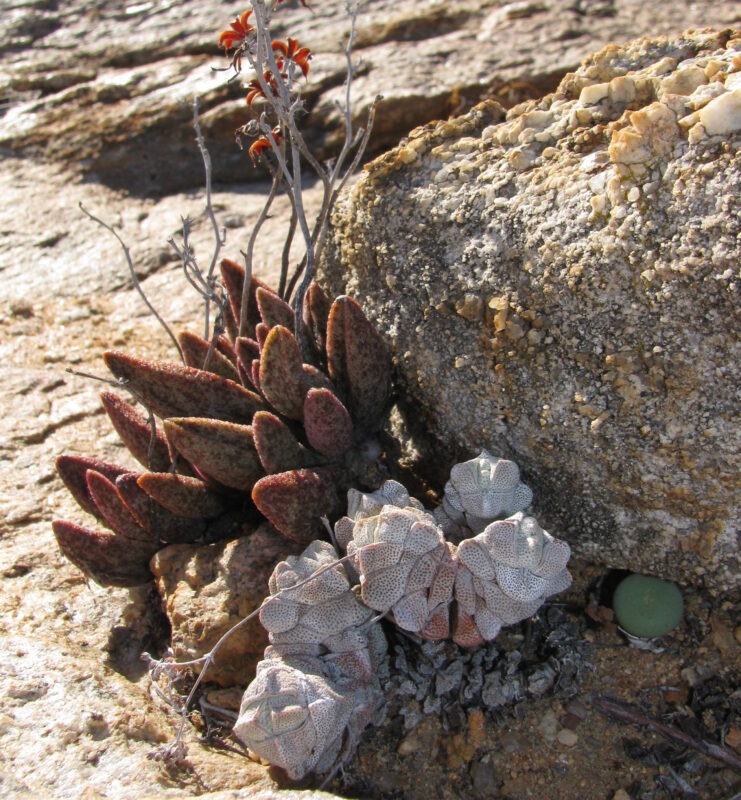
The Adromischus marianiae v. herrei, commonly known as the Plover Plant, is admired for its unique, tri-colored leaves—often showcasing beautiful red tones intermixed with shades of green.
Care Tips: It thrives in bright, indirect light and should not be watered until the soil is completely dry to maintain its vibrancy.
Distinctive Mark: Its leaf patterns often create an enchanting visual experience, drawing attention wherever it’s displayed.
Lenophyllum guttatum – Sharpleaf Lenophyllum
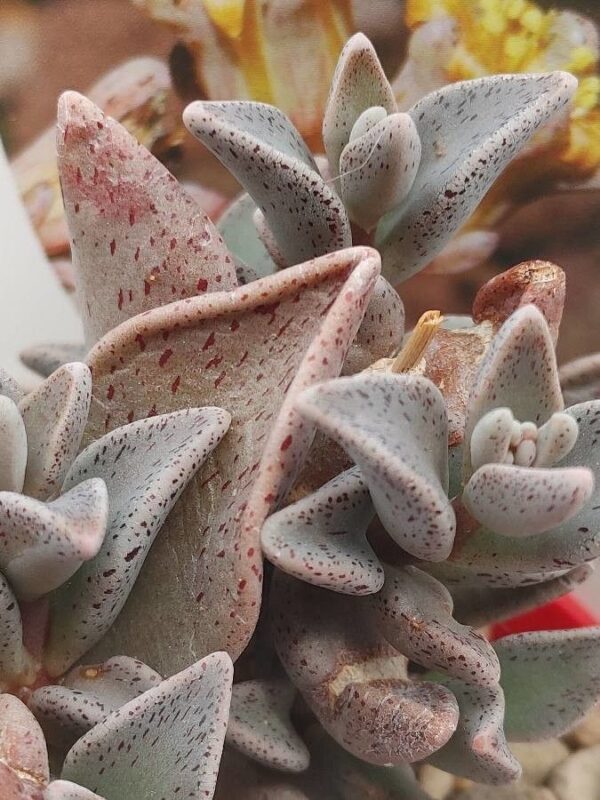
The Lenophyllum guttatum, or Sharpleaf Lenophyllum, presents beautiful, elongated leaves showcasing a reddish hue, making it quite spectacular among succulents.
Care Tips: This plant enjoys bright light but can tolerate some shade. Allow it to dry out between watering sessions, ensuring healthy growth.
Natural Allure: Its elongated form combined with vibrant colors adds an exquisite architectural element to your succulent collection.
Sedum rupestre Sunsparkler wildfire
Sedum rupestre ‘Sunsparkler Wildfire’ is renowned for its bright red tips and glossy foliage, creating a mesmerizing contrast in any succulent arrangement. This low-growing plant thrives in challenging environments, adding vibrant beauty.
Care Tips: This plant needs plenty of sunlight and well-draining soil. Allowing the soil to dry between watering is essential for keeping it healthy.
Inspiring Feature: Its dramatic colors evolve with changing seasons, providing a dynamic visual experience throughout the year.
Aeonium ‘Phoenix Flame’
Aeonium ‘Phoenix Flame’ showcases a rosette of bright yellow-green leaves that transition to vivid red under the sun’s rays. This succulent’s sun-kissed hues simulate a beautiful flame effect.
Care Tips: It prefers full sun and well-draining soil. Water moderately, allowing it to dry out between each cycle, which will enhance its vibrant colors.
Dynamic Style: This plant adds a striking aesthetic to any garden space, inviting admiration from both visitors and passersby.
Othonna Capensis— “Ruby Necklace”
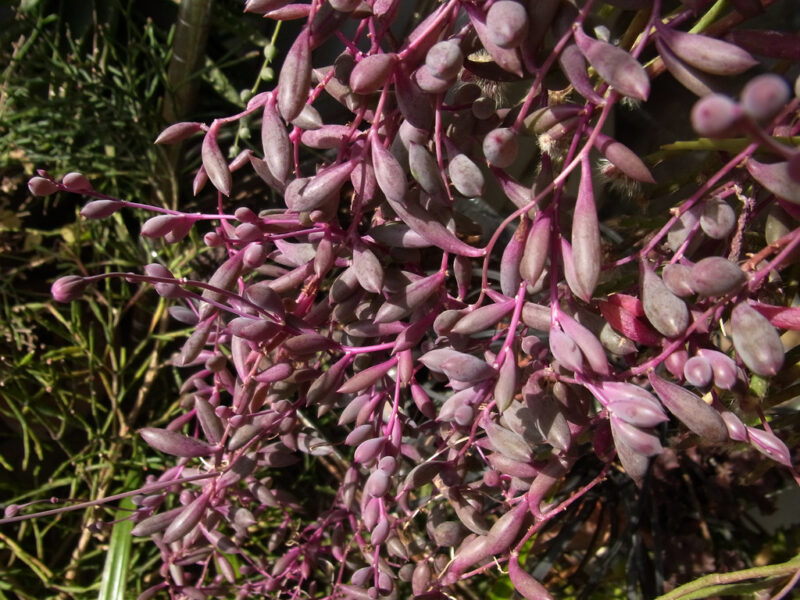
Known for its long, trailing vines adorned with round beads, Othonna Capensis or “Ruby Necklace” radiates an exquisite charm. Its vibrant red beads evoke a sense of playfulness and vibrancy.
Care Tips: Place it in bright, indirect light and allow for plenty of air circulation. Keep the soil dry, watering this succulent sparingly to encourage healthy growth.
Charming Character: Its cascading nature allows it to perform beautifully in hanging baskets, showcasing a distinctive touch of color and creativity.
Crassula pubescens ssp. Radicans – Red Carpet Stonecrop

Crassula pubescens ssp. Radicans, popularly known as the Red Carpet Stonecrop, features sprawling crimson-covered leaves that lay close to the soil, creating a vibrant carpet of color.
Care Tips: It thrives well in bright light and needs a well-draining substrate. Water this plant carefully, allowing it to dry out to avoid over-saturation that may lead to rot.
Visual Dynamics: Its unique growth habit makes it an excellent choice for ground cover or hanging arrangements, offering seamless beauty in your landscape.
Sedum ochroleucum ‘Red Wiggle’
The delightful Sedum ochroleucum ‘Red Wiggle’ offers a playful twist to traditional succulents with its bushy, red-tipped stems and wriggly appearance. Its vibrant colors make it a captivating addition to any collection.
Care Tips: Provide plenty of sunlight and ensure well-draining soil. Allow the soil to dry completely between watering sessions for optimal health.
Playful Nature: Its wiggle and color variations conjure images of a playful garden, inviting a cheerful vibe wherever it’s planted.


